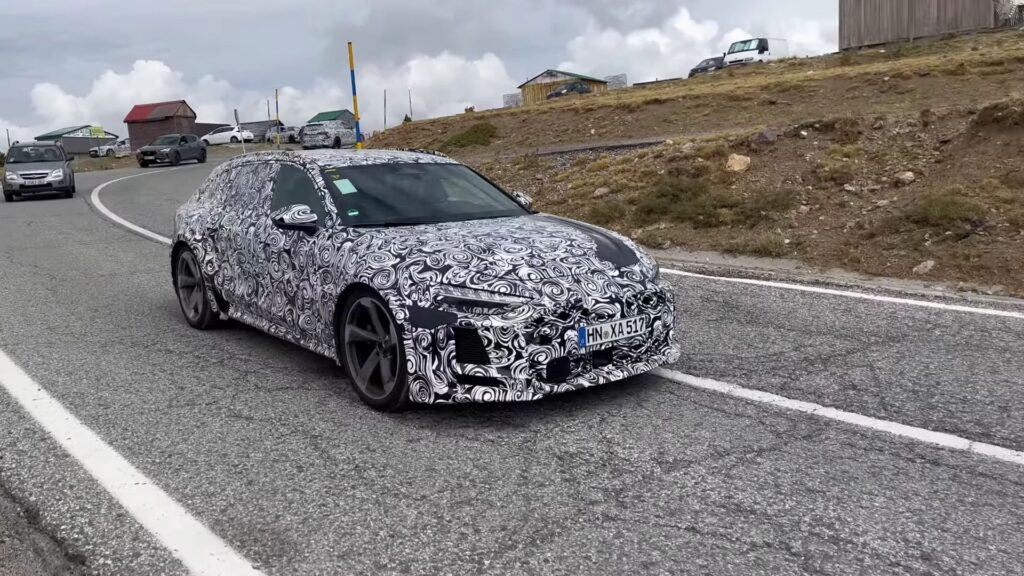Audi’s upcoming A7, set to debut early next year as a 2026 model, will feature a high-performance RS 7 variant. Recently spotted testing in Spain, the RS 7 will be available in both wagon and sedan body styles. Unlike the previous generation, the new A7 will not have a liftback design in China.
The A7, S7, and RS 7 will essentially replace the outgoing A6, S6, and RS 6, respectively. This confusion arises from Audi’s revised naming convention, which uses odd numbers for internal combustion vehicles and even numbers for electric vehicles.
The RS 7 prototypes spotted in Spain showcase an evolutionary design, borrowing elements from the B10-gen A5 and S5. These include a full width light strip with OLED technology and distinctive LED clusters up front.
While the RS 7 will likely feature a powerful V8 engine, it will also incorporate plug-in hybrid technology, similar to the BMW M5. The Audi RS 7 Avant, like its M5 Touring counterpart, is burdened by the weight of electrification.
The high voltage sticker on the windshield signifies this added heft, which is particularly noticeable in the United States where the M5 Touring plug-in hybrid weighs a staggering 5,530 pounds.
This is a significant increase compared to the combustion only RS 6 Avant performance, which weighs 4,982 pounds. The additional weight of the high voltage battery and electric motor is likely to push the 2026 Audi RS 7 Avant’s weight to around 2.5 tons.

Unfortunately, this added weight has negative consequences for both straightline and cornering performance. BMW’s new M5 sedan, for example, is slower to 60 miles per hour than its predecessor, due in part to the increased weight.
While Audi Sport deserves credit for maintaining a V8 engine in the RS 7 Avant, Mercedes AMG has made a disappointing decision to downsize to a four cylinder engine in the C 63 and GLC 63. However, there is hope for V8 enthusiasts with the upcoming CLE 63 Coupe and Convertible.

